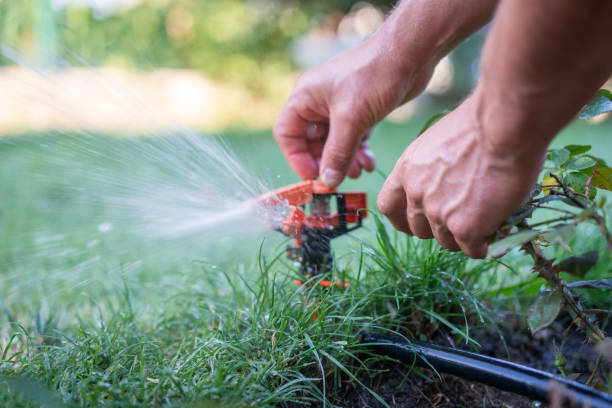Regular irrigation system inspections are essential for maintaining a healthy and efficient landscape. They help identify issues early, ensuring optimal water usage and prolonging the system’s lifespan.
Key Components of an Irrigation Inspection
A thorough irrigation inspection typically involves the following steps:
1. Sprinkler Head Examination
Inspect each sprinkler head for signs of damage, misalignment, or clogging. For instance, a sprinkler head that has been tilted due to lawnmower contact may cause uneven water distribution, leading to dry patches on your lawn. Adjusting and cleaning the heads ensures uniform coverage.
2. Valve and Pipe Assessment
Check valves and pipes for leaks, cracks, or signs of wear. A small leak in a valve can result in significant water loss over time. For example, a worn-out wiper seal in a valve may cause continuous dripping, which not only wastes water but can also damage surrounding plant life.
3. Controller and Sensor Verification
Ensure the irrigation controller is programmed correctly and functioning as intended. Verify that rain sensors or soil moisture sensors are operational to prevent overwatering. For example, a malfunctioning rain sensor might cause the system to run during a rainstorm, leading to waterlogged soil and potential plant damage.
4. Pressure and Coverage Testing
Measure water pressure to confirm it falls within the manufacturer’s recommended range. Inspect each zone for consistent coverage, adjusting sprinkler heads as necessary to eliminate dry or overwatered areas. For instance, if a zone exhibits low pressure, it could indicate a hidden leak or blockage that needs addressing.
5. Backflow Prevention Device Inspection
Examine backflow preventers to ensure they are functioning correctly, safeguarding your potable water supply from contamination. A leaking backflow device may signal internal damage, necessitating immediate repair to maintain water safety.
Benefits of Regular Irrigation Inspections
-
Water Conservation: Identifying and repairing leaks or misaligned heads prevents water waste, promoting environmental sustainability.
-
Cost Savings: Efficient water usage reduces utility bills and minimizes the need for costly emergency repairs.
-
Landscape Health: Properly functioning systems deliver adequate water to plants, enhancing their health and appearance.
-
System Longevity: Routine maintenance extends the lifespan of your irrigation components, protecting your investment.
Incorporating regular irrigation inspections into your landscape maintenance routine ensures your system operates efficiently, conserves water, and maintains the beauty of your outdoor spaces.

